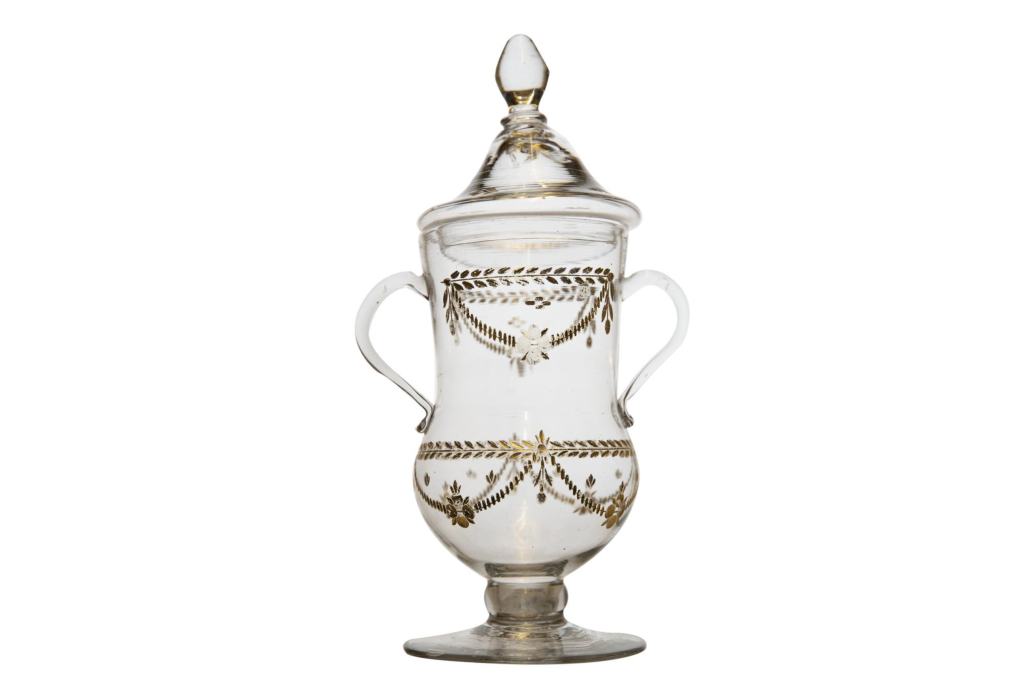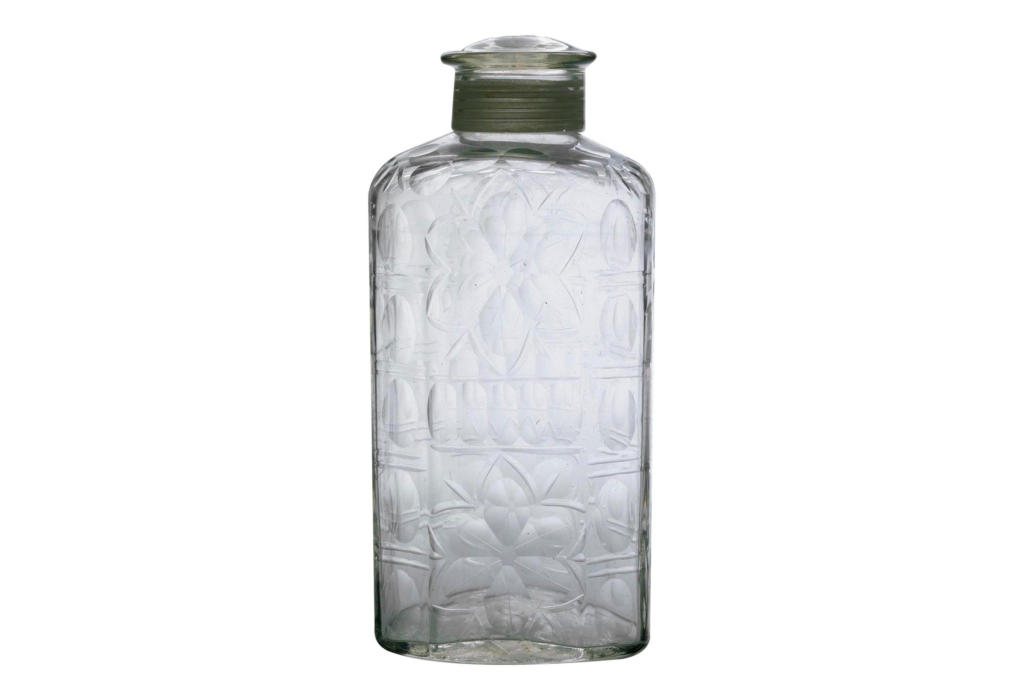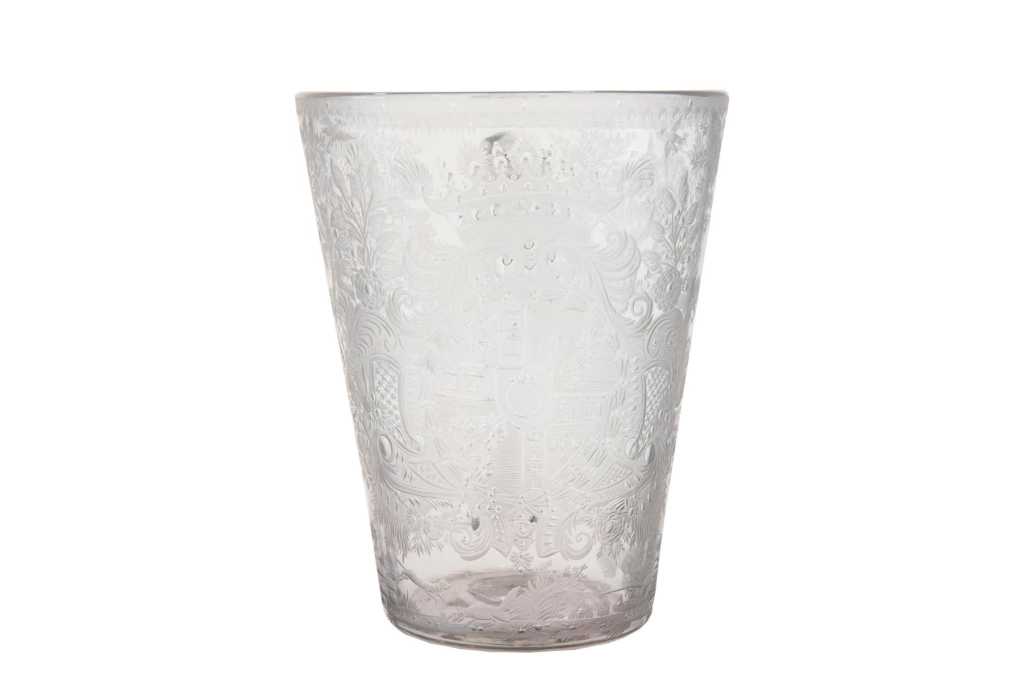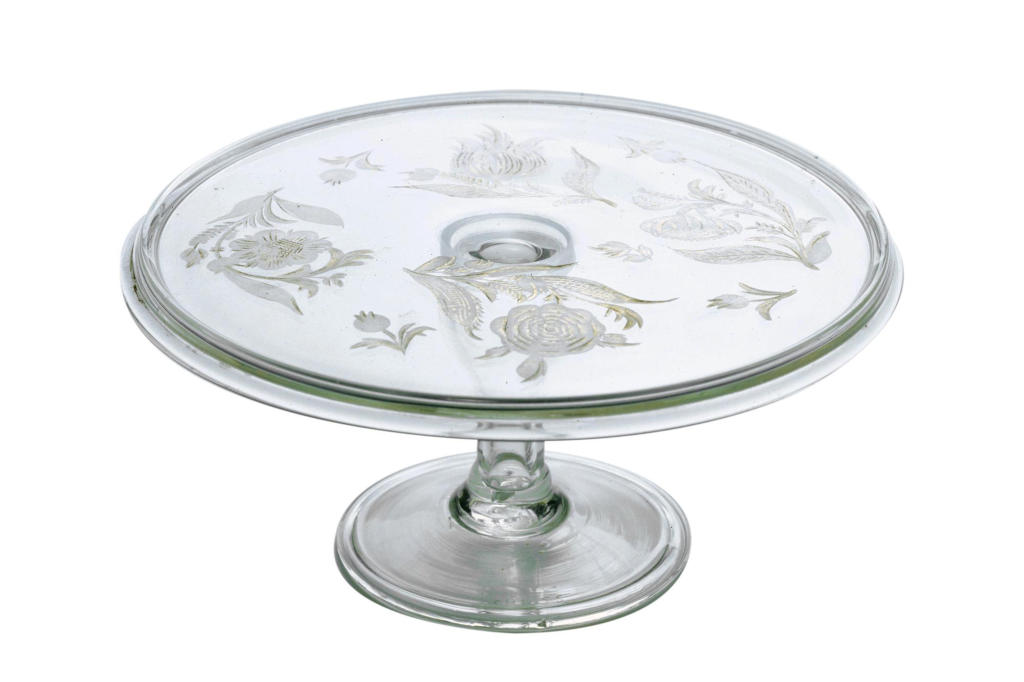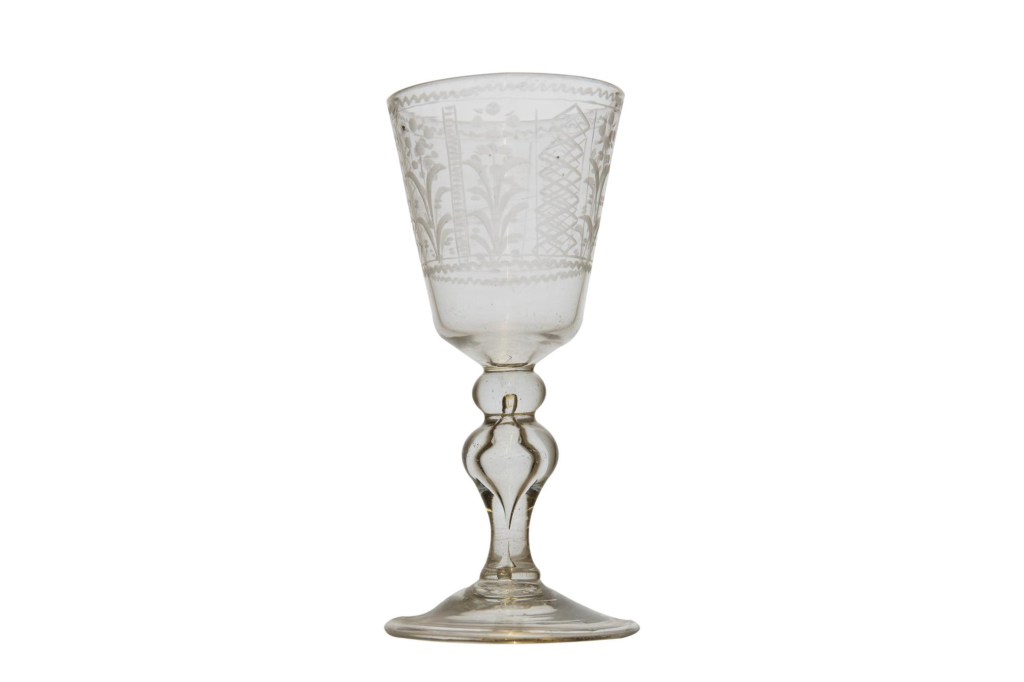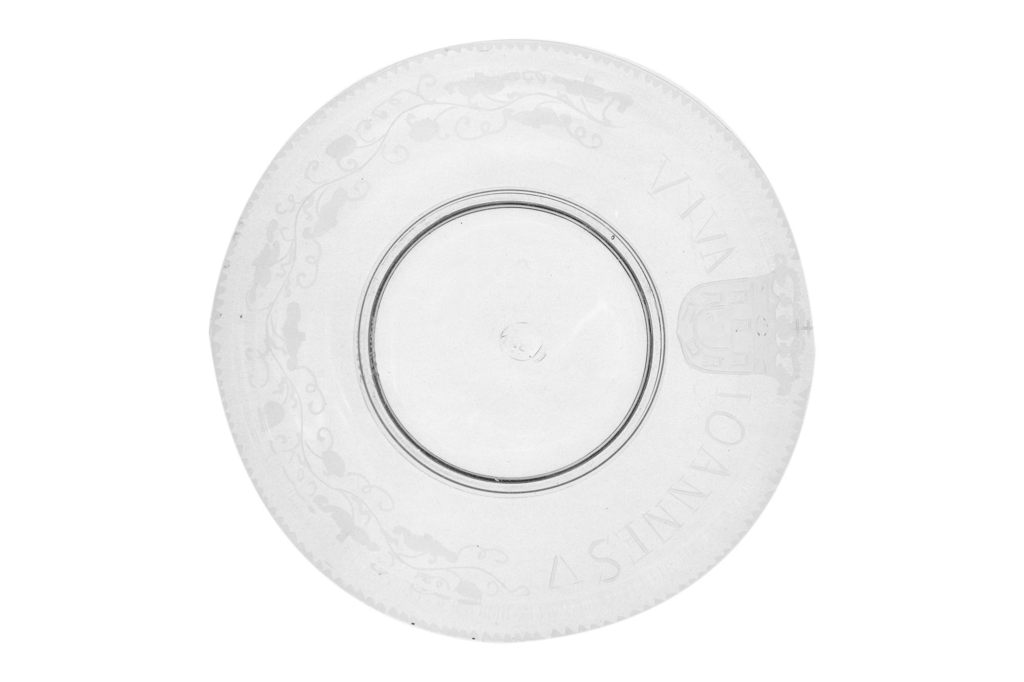Categoria de Coleção: Glass
The Soares dos Reis National Museum’s glass collection has an important set of pieces from the first national manufactures established under royal incentive, the Real Fábrica de Vidros de Coina founded in 1719 by João V. It was later transferred to Marinha Grande, where José I gave a charter to a new factory in 1769, the Real Fábrica de Vidros da Marinha Grande.
The collection contains a nucleus of the early production, the crystalline glasses, prestigious pieces intended for royal and noble usage, along with other pieces produced with imported techniques, such as enamel painting, lapidary and wheel engraving. The characteristic shapes of the 18th century are the large glasses, modern high-stemmed goblets, double glass cruets and prismatic flasks, among others. As regards foreign glassware, there is a series of transparent and opaline glasses painted in enamel illustrating a type of production that expanded in Europe from 1700 onwards. There are also pieces from the Real Fábrica de Vidros de La Granja de San Ildefonso, 1727, in Segovia, established a few years after the Portuguese factory in Coina.
The growth of the collection was directed towards nationally produced glassware, extending the chronological scope to the 19th century.
Spain, Royal Glass Factory of La Granja de San Ildefonso
1775
Clear engraved and gilded glass
Inventory sheet
More like a vase with a lid in shape, this bowl’s laurel leaf garland ornamentation follows neoclassical models of form and decoration, the main artistic trend followed by this royal Spanish manufacture. Its vast production includes delicate tableware pieces, and the gilded fire-glass, such as this piece, is a characteristic feature of its production.
Royal Glass Factory of Marinha Grande
1769-1780
Colourless wheel engraved glass
Inventory sheet
For domestic use and tableware this high neck bottle has a spherical cap, a technical innovation which allowed for the preservation of the liquids within it. It was produced by the Royal Glassworks of Marinha Grande, which received a royal charter in 1769. The legend on the back VIVAT REX IOSEPHUS 1 [Long Live King José I][Viva Rei José I] celebrates the monarch, adding the Cross of Christ, and in the centre of the bottle, the royal coat of arms.
Royal Glass Factory of Marinha Grande
1770 – 1800
Lapidated colourless glass
Inventory sheet
In the 18th century, flasks were used as containers for all kinds of liquids, but the documentation of the time specifically mentions that flasks with screw tops, or with outer threads, such as this specimen, were intended to contain tobacco.
Bohemia
1750-1800
Oak and Nordic Spruce; iron; stamped paper; colourless engraved and gilded glass
Inventory sheet
Flask cases were used for storing and preserving bottles in an organised way in compartments, when travelling. The gold ornamentation, for economy of means, was only applied on the neck of the flasks, visible when the box was open.
The exterior of the case is reinforced by iron edges and angle bars, as well as side handles allowing the safe transportation of its contents. Inside it holds 12 jars for various liquids, such as scented water and aromatic oils. The spherical lids ensure that the contents are perfectly preserved. The inside of the case is also carefully made: lined with ornate paper, the inside of the lid is cushioned, suitable for the transport of delicate objects.
Central Europe
1775-1800
Clear glass engraved with a diamond tip
Inventory file
This piece was certainly made to order, as indicated by the coat of arms of the powerful Meneses de Cantanhede family, Marquises of Marialva or of Louriçal. There is additional continuous and detailed decoration of features celebrating, with remarkable relief engraving, the rococo ornamentation: hunting scenes in progress, landscapes alive with human figures and Chinese architecture.
Royal Glass Factory of Marinha Grande (?)
1750-1800
Engraved and gilded colourless glass
Inventory sheet
Salver or tall-stemmed fruit bowl, of English origin, is reproduced in a mid-18th century catalogue of national glassware. They were used for the presentation of desserts and could be displayed in pyramids, built up with differently sized examples, thus produced as exemplified in the said catalogue.
Royal Coina Factory (?)
1719-1947
Colourless wheel engraved glass
Inventory sheet
Goblet for fortified wines or liqueurs, in keeping with the sophisticated table habits of the nobility for which it was certainly intended. The elegant tall stem followed tastes and techniques of English origin, assimilated by this manufacture, through the exchange of knowledge and experience in this area between Portugal and England.
Engraved colourless glass
Vista Alegre Factory, Joaquim Manuel das Neves (engraver)
1833-1840
Inventory sheet
The delicate engraving evokes the military episode that preceded the Siege of Porto (1832-33), the landing of the army commanded by Pedro IV on Mindelo beach.
On the small surface of the glass, the engraver Joaquim Manuel das Neves depicted all the symbols of the event: the name and portrait of the Soldier King, the frigate D. Amélia that transported him from the island of S. Miguel in the Azores and the date of the historical episode (9th July 1932).
This is a tribute, among several others, that Fábrica da Vista Alegre and its owners paid through its productions to the victory of the Liberal cause.
Royal Coina Glass Factory
1719-1748
Colourless glass, polychrome enamel painting; pewter
Inventory sheet
Flasks were extremely common in the 18th century, being used as containers for precious wines or other liquids, such as scented water or aromatic oils. This prismatic flask bears the royal coat of arms decorated with celebratory palms. On its back, there is an inscription celebrating King João V, VIVAT IOANNES V [Long Live João V], founder of the factory established in Coina.
Royal Coina Glass Factory (?)
1719-1747
Colourless wheel engraved glass
Inventory sheet
The central motif of this plate or salver has the engraved Portuguese royal coat of arms and the inscription VIVAT IOANNES V [Viva João V][Long Live João V], which celebrates the monarch founding one of the most important glassworks in the first half of the 18th century. The ornamentation, fine vine branches and bunches of engraved grapes, follows the naturalistic taste prevalent in this factory and its chronological period: the Baroque.
